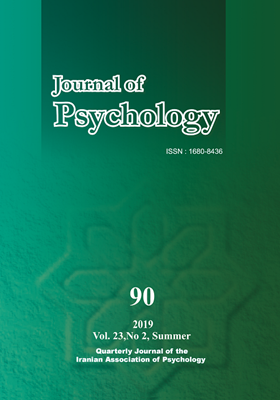-
-
List of Articles
-
Open Access Article
1 - Functional Structure and Presentation Model for the Positive Youth Development in Iranian Adolescents
Mahmood Ghasemi Mohammad Taghi Farahani Mohammad Hossein Abdolahi -
Open Access Article
2 - Relationship between Attachment Style and Psychological Well-Being: The Mediating Role of Cognitive Flexibility
Mina Fathi-Ashtiani razieh sheikholeslami -
Open Access Article
3 - Relationship between Perception of Coach’s Leadership Style and Mental Toughness of Contact Athletes
Jalil Moradi Kambiz Sadeghi Alireza Bahrami -
Open Access Article
4 - The Effect of Authentic Leadership on Burnout with Mediating Areas of Worklife and Occupational Coping Self-Efficacy
Reza Karimi Kiomars Beshlideh Esmaeil Hashemi -
Open Access Article
5 - The Relation between Job Motivation Characteristics and Burnout with Nonlinear Structure Equation Modeling Applications
Hamid Reza Oreyzi parinaz kakoolaki -
Open Access Article
6 - The Effect of Positive Mindfulness Training Program on Stress Response and Depression Symptoms in Male Adolescents with Depression Symptoms
Mohammad Yazdani Maryam Esmaeili -
Open Access Article
7 - Mediating Role of Mindfulness in the Relationship between Depression, Anxiety and Stress and Psychological Well-being
Morteza Keshmiri Ali Fathi-Ashtiani Payvand Jalali
-
The rights to this website are owned by the Raimag Press Management System.
Copyright © 2017-2025







